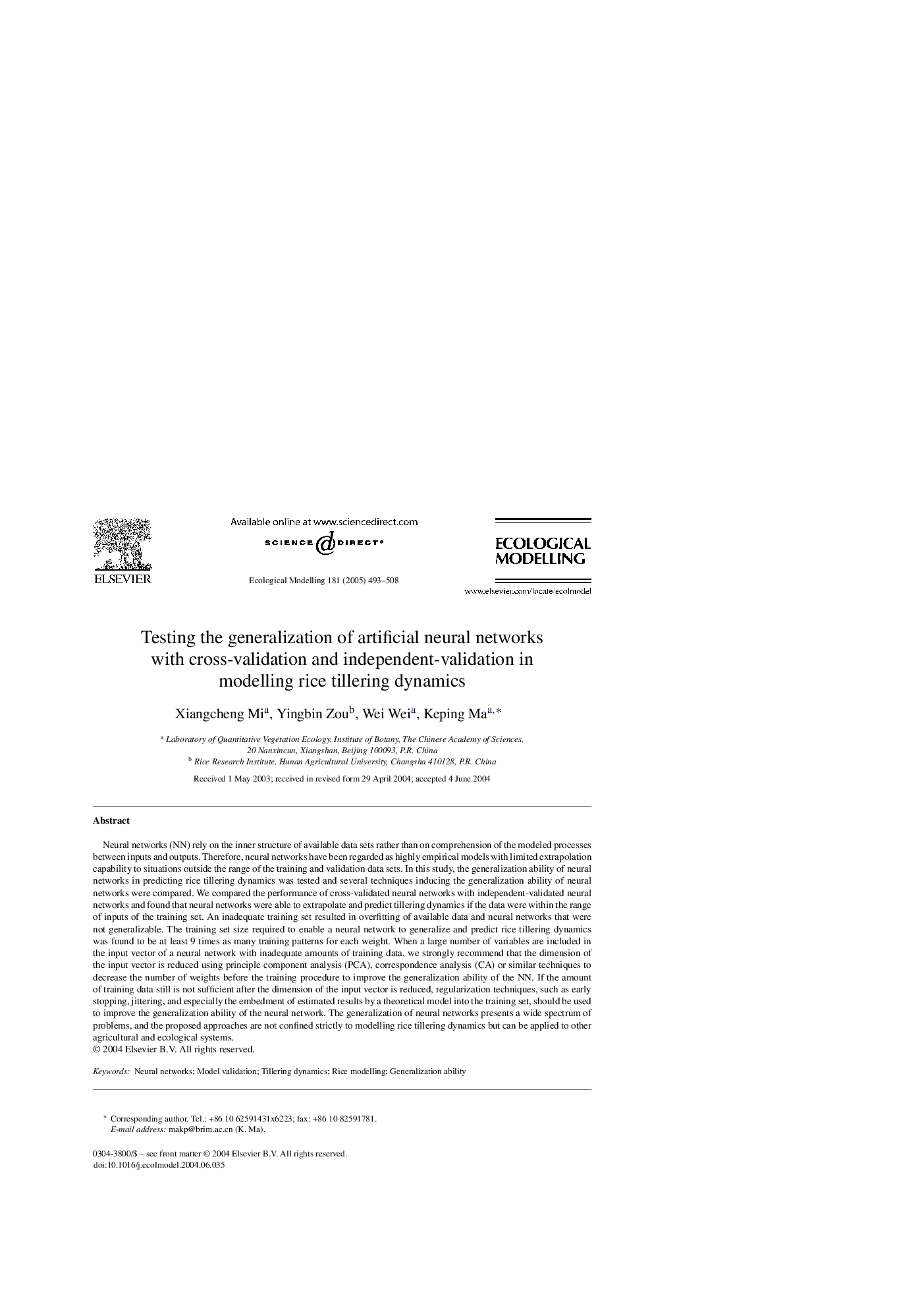| Article ID | Journal | Published Year | Pages | File Type |
|---|---|---|---|---|
| 9443641 | Ecological Modelling | 2005 | 16 Pages |
Abstract
Neural networks (NN) rely on the inner structure of available data sets rather than on comprehension of the modeled processes between inputs and outputs. Therefore, neural networks have been regarded as highly empirical models with limited extrapolation capability to situations outside the range of the training and validation data sets. In this study, the generalization ability of neural networks in predicting rice tillering dynamics was tested and several techniques inducing the generalization ability of neural networks were compared. We compared the performance of cross-validated neural networks with independent-validated neural networks and found that neural networks were able to extrapolate and predict tillering dynamics if the data were within the range of inputs of the training set. An inadequate training set resulted in overfitting of available data and neural networks that were not generalizable. The training set size required to enable a neural network to generalize and predict rice tillering dynamics was found to be at least 9 times as many training patterns for each weight. When a large number of variables are included in the input vector of a neural network with inadequate amounts of training data, we strongly recommend that the dimension of the input vector is reduced using principle component analysis (PCA), correspondence analysis (CA) or similar techniques to decrease the number of weights before the training procedure to improve the generalization ability of the NN. If the amount of training data still is not sufficient after the dimension of the input vector is reduced, regularization techniques, such as early stopping, jittering, and especially the embedment of estimated results by a theoretical model into the training set, should be used to improve the generalization ability of the neural network. The generalization of neural networks presents a wide spectrum of problems, and the proposed approaches are not confined strictly to modelling rice tillering dynamics but can be applied to other agricultural and ecological systems.
Related Topics
Life Sciences
Agricultural and Biological Sciences
Ecology, Evolution, Behavior and Systematics
Authors
Xiangcheng Mi, Yingbin Zou, Wei Wei, Keping Ma,
